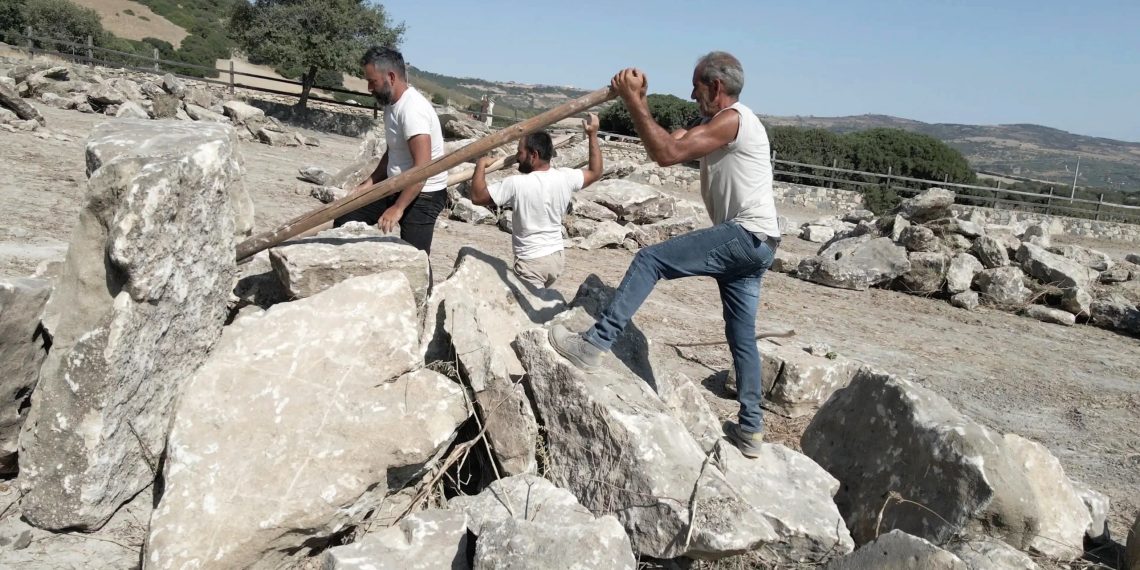Building a Nuraghe Today Using Prehistoric Techniques 0 Comments

Through our blog, we have extensively written that approximately 3700 years ago, in Sardinia, thousands of stone towers were built, up to 30 metres high with walls up to 4 metres thick, of a truncated cone shape, built with dry overlying stone blocks technique, that is, not using mortar to seal the stones together. They were called "Nuraghi” from Nur, which means piling of stones. These megalithic towers had been the tallest buildings, second only to the Egypt pyramids. It was a remarkable architectural ability of the Sardinian 1700 and 1800 BC. civilization. With two or more floors, with overlying circular chambers, they were authentic fortifications, with a central tower surrounded by others, with stone perimeter walls. The stones of the nuraghi, is perdas beccias, the old stones, testify of an evolved civilization, still too little known and therefore too little appreciated, of great warriors and great architects, creators and masters of extraordinary works.
Today a meritorious initiative will give wide resonance to the Nuragic structures.
Perdas Novas Association (which deals with the study, protection, valorisation and promotion of the culture and history of Sardinia) organised an international conference on experimental megalithism and where they presented their project for the construction of a three-lobed nuraghe.
The aim is to build it over twenty years. "A titanic undertaking never attempted by anyone until now, creating a prehistoric megalithic construction, remaining as close as possible to the probable and realistic technologies of the time through the use of materials available in the environs", say the brothers Simone and Claudio Ollanu, president and vice-president of the Perdas Novas association, promoters and coordinators together with the architect Beatrice Auguadro of the "Nuraghe" project which involves academic archaeologists, engineers, artisans and institutions representatives.
A project intending to make use of the construction techniques’ science and the hypotheses formulated over time on how to cut and move great blocks of stone. At the same time, the workers would become proficient to properly restore existing nuraghes.
The project develops in three phases:
-
An international conference, which was held in November '23 in Serri, Isili and Gergei, where the theme of Italian and Mediterranean Megalithism and the Vision of the megalithic-cultural landscape were dealt with; megalithic and monumental architecture in Sardinia and their construction characteristics were presented; the experimental construction site, where the construction techniques of a nuraghe and the methods of handling and processing the stone were illustrated live, was visited.
-
An experimental construction site:
-
to study the construction system of the part of the truss that could support the Nuragic terrace, which unfortunately we can no longer see in the tholos nuraghi of Sardinia because they all have collapsed;
-
the first phase of the project, currently already on-going, for construction tests on the ground, through a practical-scientific study;
-
and finally the Perdas Novas experimental archaeology site where, in the second phase, the Nuraghe will be completely built.
-
The instituting of a technical-scientific committee for the creation of the one-to-one scale nuraghe.
It will be an open-air laboratory in the Gergei’s countryside, in southern Sardinia, 278 km and 3 hours by car from the Gabbiano Azzurro Hotel & Suites, embraced by the large "Giare", the Gesturi Giara's plateau, or Sa Jara Manna, and the Serri Giara’s plateau. Choosing the small municipality in the Sarcidano area was not made by chance. Being of very ancient origins, it safeguards splendid pre-Nuragic and Nuragic archaeological sites, Phoenician, Punic and Roman and tomorrow it will also safeguard the youngest of all the nuraghi.
“The exploration of the past has always been one of man's most irresistible desires.” (Aly Hassan)
--Witten by Daniela Toti
Share your opinion with us!